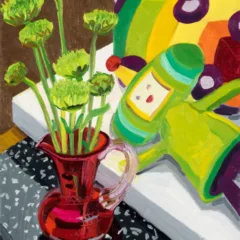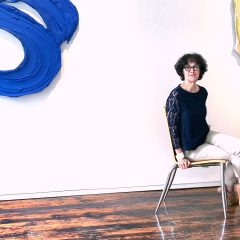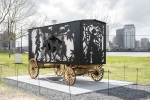Colleen McCubbin Stepanic’s work ruminates on the universality of form, from rock formations to the modern home. Her current exhibit at The Painted Bride, “Home”, is a meditation on the challenges of the housing crisis. I recently had the opportunity to sit down with Colleen at her studio at the Crane Arts building to see what she had to say about her intensely laborious paintings.
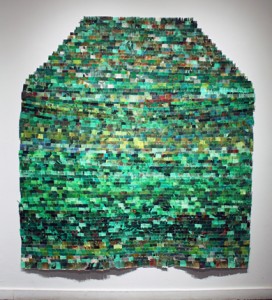
MT: How do you begin a piece? Is painting the first step?
CMS: Not necessarily, but with some of them, yes. Some of them are recycled canvases. Much of my work is a process of cut, sew, paint, cut, sew, paint, cut, sew, paint…so even after I have painted on one and sewn it, I’ll cut it apart again. Depending on which piece it is, some of them have been manipulated a lot.
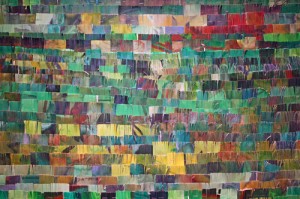
MT: Do people often ask you to discuss your work in terms of the domestic sphere, because of the sewing aspect?
CMS: I keep everything on canvas, so they are actually paintings. Every time people push me towards fibers, I think ‘OK’, but I will always be a painter in my own mind. Yes, I could make these pieces out of other material, but I really want to be able to paint on them. And canvas is really the most suitable medium for that.
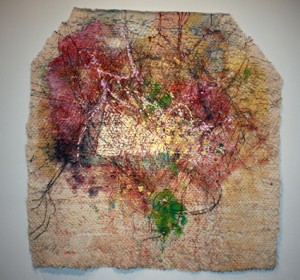
MT: Your current show at the Painted Bride has a theme of ‘Home’. In this exhibit, you use the story of ‘The Three Little Pigs’ as a way of creating a public/private distinction. Were you thinking of this exhibit as a way of reconstructing the ‘home’ metaphorically?
CMS: Yes. The housing crisis is a public experience. Those pieces [in the Painted Bride show] are very personal, very specifically about my own experiences. I think that when something is so big…people lose sight of the fact that [the housing crisis] is really an individual experience.
MT: Is taking on this subject matter, because it is so broad, a way of personalizing the national?
CMS: Basically. My husband had been in the auto industry and he lost his job. After our house foreclosed, they [the media] were talking about all the loans and everything, which I found frustrating, because our problem wasn’t loans, it was not having a job. I think that is where I went to the fairy tale [The Three Little Pigs]. There are certain things that you can’t prepare for.
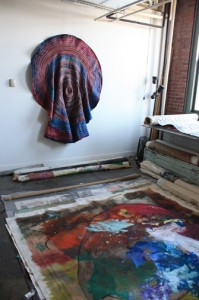
MT: Like realizing the dream of ownership or Bush’s ‘ownership society’ is a myth?
CMS: And where it puts you after you flunk out of it. It is interesting to see your experience go through the news, but be misrepresented, as far as how you are experiencing it.
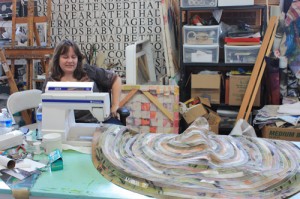
MT: So your work is a response to the psychological scars of losing one’s home?
CMS: Yes. My piece Greener Grass is really about owning a lawn: about who you are when you own a house and you have a lawn and where that places you in society…[however], I started realizing you can own things in a different way. You don’t have to own it to get value from it and to get value from interacting with it. That is where I started going to natural forms for the basis of these works. I like the connection between the natural and emotional content.
Colleen McCubbin Stepanic’s work is on view at The Painted Bride through May 1, 2010; StrataSphere Gallery through May 15; Tommi Studio through October.
Montana Torrey is a multi-disciplinary artist based in Philadelphia. She has been an artist-in-residence at Skowhegan School of Painting and Sculpture, Headlands Center for the Arts, the Catwalk Residency, and the Vermont Studio Center. She has a BFA from The School of the Art Institute of Chicago and a MFA from University of North Carolina at Chapel Hill.



